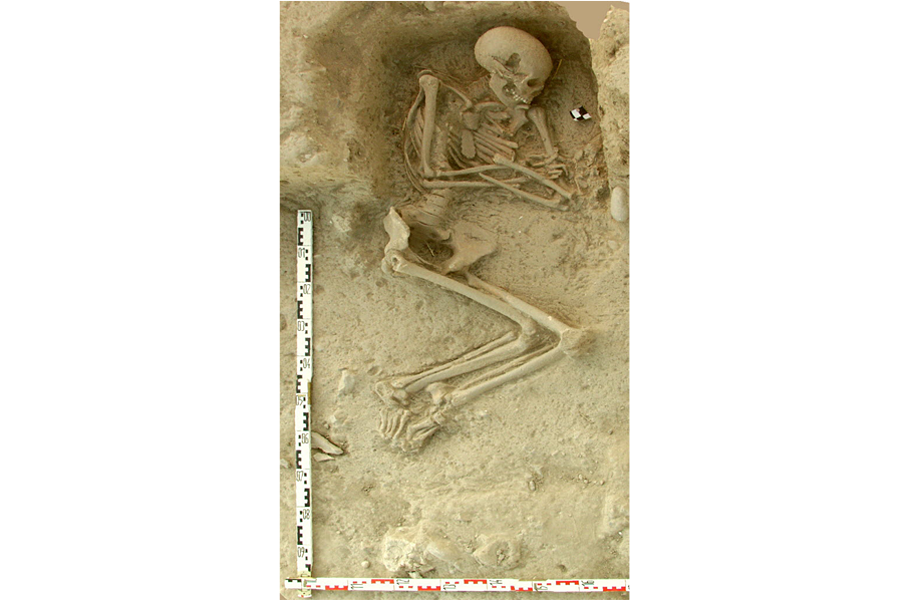How did farming spread across Stone Age Europe? Two paths found.
Loading...
Humans began to settle down and farm the land some 12,000 years ago in the Fertile Crescent in southwestern Asia. Over the next couple thousand years, agriculture caught on in other regions, setting the stage for today's human civilization.
But scientists have puzzled over how exactly farming spread. Did the world's first farmers migrate across Eurasia, taking their lifestyle with them? Did roaming hunter-gatherers who encountered these early farmers learn their craft? Or was it perhaps a combination of the two?
Migration was a key piece of this story, at least in Europe, according to a new study that uses ancient and modern DNA to map the route these farming settlers took.
"Our study provides the coup de grâce to the notion that farming spread into and across Europe via the dissemination of ideas but without, or with only a limited, migration of people," the study authors write in their paper published Monday in the journal Proceedings of the National Academy of Sciences.
Some 8,000 years ago people living around the Aegean Sea began to spread into southern Europe, bringing their farming skills into a continent that had only seen hunter-gatherers for tens of thousands of years, according to the paper. And that migration is apparent in an "unbroken chain of ancestry leading from central and southwestern Europe back to Greece and northwestern Anatolia."
A team of palaeogeneticists looked at genetic samples extracted from skeletons found at known early farming sites in Greece and Turkey and compared them to genomes from other parts of Europe. This DNA confirmed that these early farmers were moving themselves across Europe.
The researchers also noticed something peculiar. Ancient farmers in Spain and central Europe didn't seem to be very closely related. In fact, they were more closely related to the Aegean population than each other.
This suggests a scenario in which there were two migration routes from the Aegean into Europe. When these early farmers spread into Europe, one group moved north into the center of the continent, while the other moved along the coast to Spain.
"One is the Balkan route and one is the Mediterranean route, as we know it also from migration of today," Joachim Burger, an anthropologist and population geneticist at Johannes Gutenberg University in Germany who was an author on the new paper, told the Associated Press.
This article contains material from the Associated Press.








